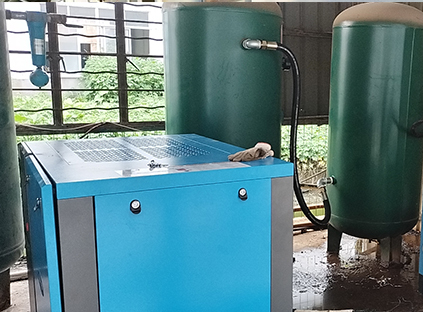Screw air compressors are widely used in various industries for generating compressed air. However, these machines can sometimes face challenges when starting up in low-temperature environments. This article aims to address the common issues associated with low-temperature startup problems in screw air compressors and provide practical solutions to overcome them.

1. Understanding the Impact of Low Temperatures on Screw Air Compressors:
Low temperatures can adversely affect the performance and functionality of screw air compressors. Some of the key problems that arise due to low temperatures are:
a. Thickened Lubricants: In cold conditions, lubricants used in screw air compressors tend to thicken, which affects the smooth operation of the machine.
b. Increased Friction: Cold temperatures can cause increased friction between the moving parts of the compressor, leading to difficulty in startup.
c. Condensation: Low temperatures often result in condensation, which can accumulate in critical components and hinder the startup process.
2. Pre-Startup Preparations:
To avoid low-temperature startup issues, it is crucial to undertake certain preparations, including:
a. Preheating: Preheating the compressor before startup is essential in extremely cold conditions. This can be done using external heaters or by maintaining a warm environment around the compressor.
b. Insulation: Proper insulation of the compressor and its components can minimize heat loss and prevent the formation of condensation.
c. Lubricant Selection: Choosing the right lubricant suitable for low-temperature operations is vital. Low-viscosity lubricants are recommended for cold environments.
3. Troubleshooting Steps for Low-Temperature Startup Issues:
If you encounter difficulties starting a screw air compressor in low-temperature conditions, follow these troubleshooting steps:
a. Check Lubricant Viscosity: Verify if the lubricant has thickened due to low temperatures. If so, consider replacing it with low-temperature lubricants as recommended by the manufacturer.
b. Inspect Electrical Connections: Ensure all electrical connections are tight and secure. Cold temperatures can cause contraction, potentially loosening electrical connections, leading to startup issues.
c. Drain Moisture: Check and drain any accumulated moisture in the air receiver or other components. Excessive condensation can hinder the startup process.
d. Warm-Up Period: Allow the compressor to warm up gradually before starting. This enables the lubricant and other components to reach the optimal operating temperature.
e. Verify Heater Functionality: If the compressor has an integrated heater, ensure it is operating correctly. Faulty or malfunctioning heaters can prevent the compressor from starting in low temperatures.
f. Monitor Pressure Sensors: Examine pressure sensors for any malfunctions or inaccuracies. Faulty sensors can misinterpret the pressure conditions, resulting in startup issues.
4. Regular Maintenance and Preventive Measures:
To minimize low-temperature startup problems in the long run, it is essential to adopt regular maintenance practices, such as:
a. Lubricant Inspection and Replacement: Regularly inspect and replace lubricants to ensure optimal performance in low-temperature conditions.
b. Heater Maintenance: Periodically check and maintain the heaters to ensure they are functioning correctly.
c. Condensate Management: Implement proper condensate management systems to prevent moisture accumulation and subsequent startup issues.
d. Temperature Monitoring: Install temperature monitoring systems to track and control the operating temperatures of the compressor.
Low-temperature startup issues can be challenging for oil injected air compressor, but with proper understanding, planning, and troubleshooting, these problems can be effectively addressed. By following the steps outlined in this article and implementing regular maintenance practices, operators can ensure reliable and efficient startup even in cold environments.